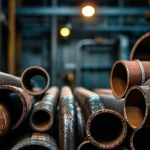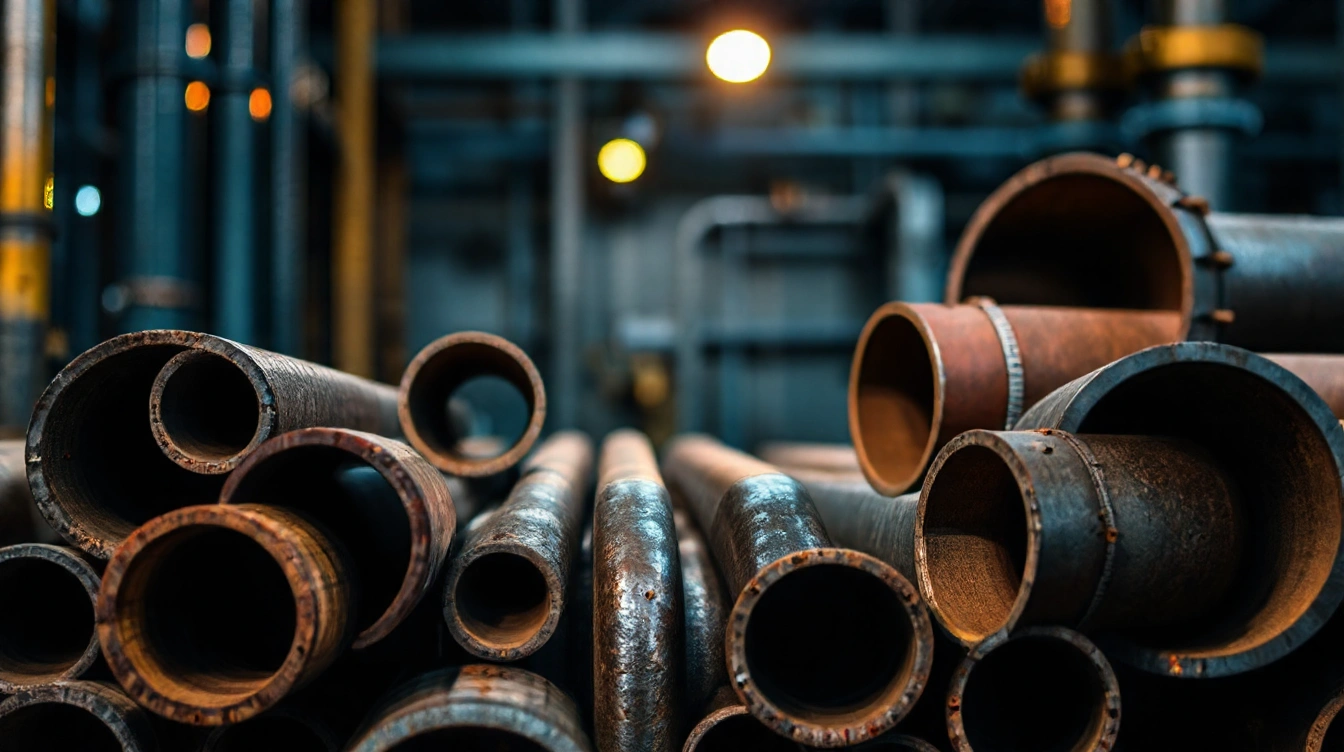Selecting the right oil pipe solution demands more than just comparing prices. It requires careful evaluation of material compatibility with harsh environments, durability for prolonged use, and adherence to safety regulations. Understanding long-term maintenance costs and supplier reliability also plays a pivotal role in ensuring operational efficiency. This guide highlights key factors to help you make informed decisions that balance performance, safety, and investment value in oil pipe selection.
Essential Factors in Choosing Oil Pipe Solutions
Selecting the right oil pipe is critical to ensure safe, efficient, and long-lasting operations. One of the primary considerations in oil pipe selection is the material type. Different materials offer varied resistance to corrosion, temperature, and pressure, which directly impacts the durability of the pipe. For instance, stainless steel pipes are often preferred in highly corrosive environments, while carbon steel might be suitable for less demanding conditions. Understanding the specific environment where the pipe will be deployed helps determine the most compatible material.
Also read : What Are the Keys to Success in the UK Business Landscape?
Durability is not just about withstanding the initial conditions but also about ensuring a long lifespan with minimal maintenance. A pipe that degrades quickly can lead to leaks, downtime, and significant repair costs. Therefore, assessing a pipe’s resistance to wear, chemical exposure, and mechanical stress is essential. This is why adhering to oil pipe best practices includes choosing materials tested for such parameters and sometimes applying protective coatings to enhance longevity.
Compliance with safety standards and regulations plays a pivotal role in oil pipe selection. These standards govern everything from pipe thickness and joint strength to chemical compatibility to prevent failures that could harm people or the environment. Ensuring your oil pipe solution meets or exceeds these regulations not only safeguards operations but also helps avoid costly legal repercussions.
Also to read : Is the Future of UK Business Dependent on Technology?
In summary, efficient oil pipe selection is a balance of understanding material types, durability needs, regulatory compliance, and environmental conditions to optimize performance and safety. For those looking to navigate these complexities, taking the time to choose a high-quality option is a wise investment; learn how to choose a high quality oil pipe that suits your project’s demands effectively.
Cost and Value Considerations
When assessing oil pipe cost, it is essential to balance initial expenses with the overall investment value the pipe provides over its lifespan. While lower-priced options may seem attractive, they can lead to higher maintenance or replacement costs, reducing long-term savings. Evaluating oil pipe pricing involves considering not only the upfront purchase price but also factors such as durability, resistance to corrosion, and suitability for specific industrial environments.
Material types significantly impact both price and performance. For example, steel pipes typically have a higher initial cost than plastic alternatives but often offer superior strength and longevity, which may justify the investment through reduced downtime and fewer replacements. Conversely, some synthetic materials might lower upfront costs but require more frequent inspections and upkeep, increasing the total expenditure over time.
Budget planning should incorporate anticipated maintenance and potential failure costs. Understanding these expenses helps forecast the true value of an oil pipe, guiding informed decisions. Choosing a high quality oil pipe can mitigate unforeseen expenses by ensuring reliability and reducing repair frequency, which is especially crucial in critical oil transport applications where safety and efficiency matter most.
Installation and Maintenance Requirements
Proper oil pipe installation is crucial to ensure long-term operational efficiency and safety. The process demands adherence to specific requirements, such as selecting the correct pipe material, ensuring secure fittings, and verifying alignment to prevent leaks or stress points. Challenges often arise from site conditions, such as uneven terrain or limited access, which necessitate tailored installation approaches.
Maintenance tips emphasize regular inspections to detect corrosion, cracks, or blockages early. Different materials require distinct upkeep methods; for example, steel pipes might need anti-corrosion coatings, while flexible polymers benefit from periodic cleaning to prevent buildup. Following these maintenance guidelines helps to minimise downtime by addressing issues before they escalate into failures.
Ease of installation significantly impacts ongoing maintenance. Well-planned installations reduce the difficulty of accessing pipes for routine checks and repairs. Integrating monitoring systems can further enhance operational efficiency by providing real-time data on pipe condition. For those selecting components, choose a high quality oil pipe to ensure robustness and ease of maintenance throughout its service life.
Supplier Reliability and Industry Reputation
When selecting among reliable oil pipe suppliers, assessing their track record is crucial. A supplier’s history of delivering quality materials on time reflects their operational integrity and commitment. This history often reveals their ability to meet complex industrial demands consistently, which is vital in sectors reliant on durable and safe oil pipes.
Vendor evaluation involves scrutinizing multiple dimensions: delivery timeliness, product consistency, and after-sales support. Such evaluation is enhanced by considering supplier trustworthiness shown through transparent business practices and response to client inquiries. The more open a supplier is about their processes, the easier it is to establish a dependable relationship.
Customer feedback and industry reviews serve as real-world indicators of supplier reliability. Comparing these reviews offers insight into performance across different markets and projects, helping businesses avoid suppliers who fail to uphold standards. Positive endorsements in industry forums or professional gatherings further strengthen a supplier’s standing.
Certifications and industry endorsements act as formal signals of quality and compliance with stringent standards. These credentials demonstrate that suppliers meet or exceed regulations, which is critical when durability and safety cannot be compromised. Requesting proof of such certifications is an essential step in vendor evaluation, ensuring informed decisions when you choose a high quality oil pipe.
Incorporating these factors into your assessment maximizes the chances of partnering with dependable suppliers, safeguarding your project’s success and operational continuity.
Compliance with Regulations and Safety Protocols
Navigating oil pipe regulations is crucial for ensuring both legal adherence and operational safety in the oil industry. These compliance standards encompass a variety of local and international rules designed to minimize environmental risks and guarantee product reliability. For companies involved in sourcing or installing oil pipes, understanding these compliance requirements is not optional but foundational.
Local regulations may vary significantly depending on the country or region, often reflecting specific environmental and safety priorities. International standards, such as those published by the American Petroleum Institute (API) or ISO, establish a global benchmark that facilitates cross-border projects and assures quality across markets. Adhering to these standards mitigates risks related to failures and legal penalties, making them indispensable considerations during project planning.
Safety certification plays a pivotal role in product selection. Certifications validate that the oil pipe meets essential performance criteria under expected operational conditions, such as pressure tolerance and corrosion resistance. For example, pipes with recognized safety certifications reduce the likelihood of leaks or ruptures that could lead to costly incidents or environmental damage.
Considering regulatory impacts through case studies illustrates how compliance affects project outcomes. Non-compliance can result in halted operations, increased costs, or damaged reputations, whereas strict adherence often streamlines approvals and enhances stakeholder trust. This dynamic underscores why companies should consult regulatory frameworks early in the procurement process and emphasize selecting pipes aligned with industry guidelines.
In sum, prioritizing oil pipe regulations and compliance standards—supported by rigorous safety certification—is integral to both safeguarding operations and achieving successful project execution. For those looking to optimize their approach, resources that help choose a high quality oil pipe can provide valuable guidance on meeting these essential requirements.
Expert Insights and Real-World Examples
When selecting an oil pipe, industry tips emphasize assessing both material and application to ensure long-term performance and safety. Experts recommend considering factors like corrosion resistance, pressure tolerance, and environmental conditions. For example, steel pipes are ideal for high-pressure situations, while polyethylene offers excellent corrosion resistance and flexibility for less demanding applications.
In professional recommendations, it is advised to evaluate the pipe’s intended use thoroughly, balancing cost-effectiveness with durability. An oil pipe that cannot withstand operational pressures or chemical exposure will fail prematurely, leading to costly repairs.
Real-world oil pipe case studies shed light on these guidelines. In one instance, a refinery replaced aging steel pipes with advanced coated steel variants, reducing corrosion-related failures by 40%. Another case involved deploying polyethylene pipes in offshore environments, where their resistance to saltwater and ease of installation proved invaluable.
For a clear overview, consider a comparison of oil pipe solutions by material:
- Steel: High pressure and temperature tolerance; requires corrosion protection.
- Coated steel: Enhanced corrosion resistance; suited for harsh environments.
- Polyethylene: Excellent corrosion resistance; flexible and lightweight, best for low to moderate pressures.
Choosing the right oil pipe is critical; professional insights and case examples highlight the importance of matching pipe properties with specific operational demands. For detailed guidance on selecting suitable materials and solutions, explore how to choose a high quality oil pipe.





